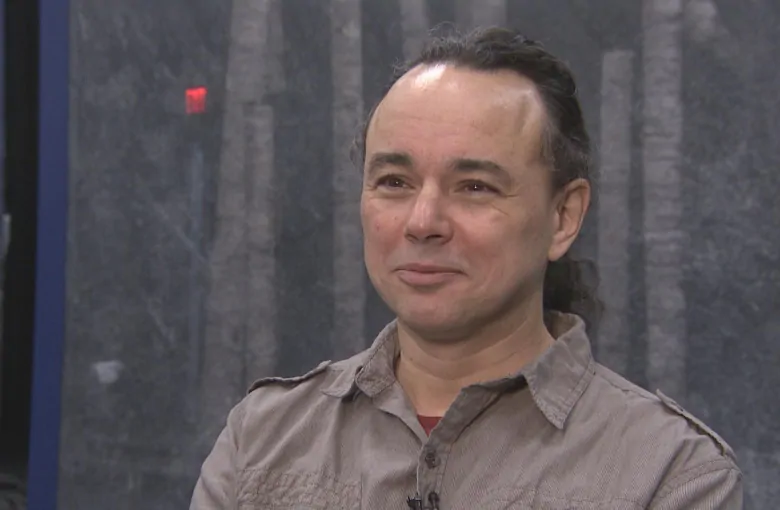Indigenous theatre company explores grief, loss and laughter in new production

Like so many Indigenous people in Canada, James Dallas Smith’s family history involves time at residential schools.
His grandmother is a survivor of one, but despite what she went through, one of the things the Anishinaabe actor said he remembers most about her is her sense of humour.
“She laughed so easily and so often. I didn’t realize until much later in life that it was probably a survival tool, but I loved it,” he said.
That concept, of using humour to get through pain, is being explored in Native Earth Performing Arts’ new production, This Is How We Got Here, says Smith. The Indigenous theatre company is dedicated to producing pieces reflecting Indigenous experiences in Canada.
The play is about the suicide of a young person — an issue many Indigenous communities are grappling with — but it’s also about using laughter as a way of bringing people together in times of sorrow.
“As hard as the subject is, there’s still lots of moments where you laugh,” he said.
“I think it’s a big part of resilience, is humour, and it’s what allows us to move on.”
The 2018 Governor General-nominated play, written by Algonquin Métis playwright Keith Barker, is being performed by an all Indigenous cast at Aki Studio in Regent Park from Jan. 26 to Feb. 16.
Ahead of its opening day, Our Toronto spoke to the cast and crew about the story they’re portraying and why it’s important.
You can watch the story below, or read on to learn more.
This Is How We Got Here
The production is written and directed by Barker, who is also the artistic director of Native Earth Performing Arts.
He said the idea for the play came from losses in his own life.
“My aunt and uncle lost both their sons to suicide, and I spent many years with them … and out of that I saw how they were dealing with grief,” he said.
“Then, a couple of years ago a family friend took his own life, and so again I was present and watched as friends were also dealing with that … that was really kind of what solidified I needed to write a play about what the aftermath of a great loss is.”

Anishinaabe-Ashkenazi actor Tamara Podemski plays ‘Lucille,’ one of four characters dealing with a loss in the production.
“I think it’s impossible to talk about some of these realities that our communities are going through right now without bringing it back to colonization, without bringing it back to intergenerational trauma,” she said.
“This is a family that is doing their best to process something horrible that happened, but when you don’t have the tools and you haven’t learned the tools from your parents … it’s really hard to navigate.”
Dallas Smith said just like in the play, many Indigenous families are still trying to reconnect with their way of life. As a result, they’re sometimes unsure of how to deal with a tragedy culturally.
At times, the characters look to nature for answers — an element Barker said he often includes in his productions — in this case, through a fox continually stealing from the family garden.
“One person thinks it’s a ghost. One person thinks it’s a reincarnated spirit. Somebody else just thinks it’s a fox,” Dallas Smith said.
“But it’s the element of magic and mystery that I think weaves the play together. It’s beautiful.”
For him, the main takeaway from the story is the resilience of this family and the journey they take to become open and honest with themselves — and each other.
“It focuses on how they get through the tragedy, how they move on and discover themselves again.”
Of course, humour is present to get the characters through their grief.
“The joy factor is huge,” Pedemski said.
“It’s a huge component of healing, of reminding us of the good feelings, and it’s contagious.”

When people leave the play, Barker said he wants the audience to feel a sense of hope and to realize it’s possible to rebuild connections with family and friends around them.
“There are so many times when I’ve been in places where people from the audience, young Indigenous people or even elders, coming in just saying like, ‘It’s the first time I’ve seen myself reflected back,'” he said.
“It just constantly reminds me how we find connection through storytelling.”
The play was published by Playwrights Canada Press in 2017 and the published version was a finalist for the Governor General’s Literary Award for Drama in 2018.





